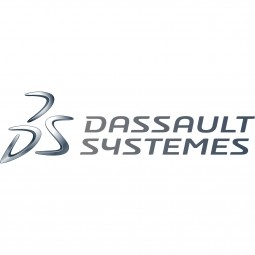Improving Material Handling Machinery Development with DraftSight Enterprise: A Case Study on Young Industries, Inc.

Technology Category
- Functional Applications - Enterprise Resource Planning Systems (ERP)
- Functional Applications - Product Data Management Systems
Applicable Industries
- Equipment & Machinery
Applicable Functions
- Product Research & Development
Use Cases
- Inventory Management
- Virtual Prototyping & Product Testing
Services
- System Integration
- Training
About The Customer
Young Industries, Inc. is a manufacturer of custom-designed equipment for handling dry bulk materials in the chemical, petrochemical, ceramics, and coatings industries. The company has been manufacturing conveying systems and related components since 1947 and holds many patents for problem-solving equipment. Young Industries is certified by ASME (American Society of Mechanical Engineers) and the National Board of Boiler and Pressure Vessel Inspectors to manufacture pressure vessels as set forth by U, UM, and R regulations. The engineering staff is constantly evaluating better methods to develop, design, and manufacture equipment to solve customer needs.
The Challenge
Young Industries, Inc., a manufacturer of custom-designed equipment for handling dry bulk materials, was seeking to optimize the use of 2D and 3D design tools to boost productivity and advance the development of custom material-handling systems. The company had been using the SOLIDWORKS® 3D applications platform for the past two decades, but still had needs that were better addressed with 2D tools. They had been using MountainTop® 2D design software, but decided to seek a new 2D design solution after encountering both hardware and software failures. The company needed a solution that was easier to maintain and support, included the features they needed at a better price, and was compatible with their existing SOLIDWORKS design environment.
The Solution
Young Industries decided to add DraftSight Enterprise 2D design solutions to their existing SOLIDWORKS 3D applications platform. After evaluating available 2D design packages, they chose DraftSight Enterprise because it was easier to maintain and support, included the features they needed at a better price, and was the most compatible with their existing SOLIDWORKS design environment. DraftSight Enterprise provided greater flexibility in licensing and directly integrated with their SOLIDWORKS PDM Professional product data management system. The implementation of DraftSight Enterprise allowed Young Industries to provide its engineers with the most suitable solutions for specific tasks, manage its trove of 2D legacy data and library of 2D design entities more effectively, and integrate their drawings into their PDM system.
Operational Impact
Quantitative Benefit

Case Study missing?
Start adding your own!
Register with your work email and create a new case study profile for your business.
Related Case Studies.

Case Study
Smart Water Filtration Systems
Before working with Ayla Networks, Ozner was already using cloud connectivity to identify and solve water-filtration system malfunctions as well as to monitor filter cartridges for replacements.But, in June 2015, Ozner executives talked with Ayla about how the company might further improve its water systems with IoT technology. They liked what they heard from Ayla, but the executives needed to be sure that Ayla’s Agile IoT Platform provided the security and reliability Ozner required.

Case Study
IoT enabled Fleet Management with MindSphere
In view of growing competition, Gämmerler had a strong need to remain competitive via process optimization, reliability and gentle handling of printed products, even at highest press speeds. In addition, a digitalization initiative also included developing a key differentiation via data-driven services offers.

Case Study
Predictive Maintenance for Industrial Chillers
For global leaders in the industrial chiller manufacturing, reliability of the entire production process is of the utmost importance. Chillers are refrigeration systems that produce ice water to provide cooling for a process or industrial application. One of those leaders sought a way to respond to asset performance issues, even before they occur. The intelligence to guarantee maximum reliability of cooling devices is embedded (pre-alarming). A pre-alarming phase means that the cooling device still works, but symptoms may appear, telling manufacturers that a failure is likely to occur in the near future. Chillers who are not internet connected at that moment, provide little insight in this pre-alarming phase.

Case Study
Premium Appliance Producer Innovates with Internet of Everything
Sub-Zero faced the largest product launch in the company’s history:It wanted to launch 60 new products as scheduled while simultaneously opening a new “greenfield” production facility, yet still adhering to stringent quality requirements and manage issues from new supply-chain partners. A the same time, it wanted to increase staff productivity time and collaboration while reducing travel and costs.

Case Study
Integration of PLC with IoT for Bosch Rexroth
The application arises from the need to monitor and anticipate the problems of one or more machines managed by a PLC. These problems, often resulting from the accumulation over time of small discrepancies, require, when they occur, ex post technical operations maintenance.

Case Study
Data Gathering Solution for Joy Global
Joy Global's existing business processes required customers to work through an unstable legacy system to collect mass volumes of data. With inadequate processes and tools, field level analytics were not sufficient to properly inform business decisions.






